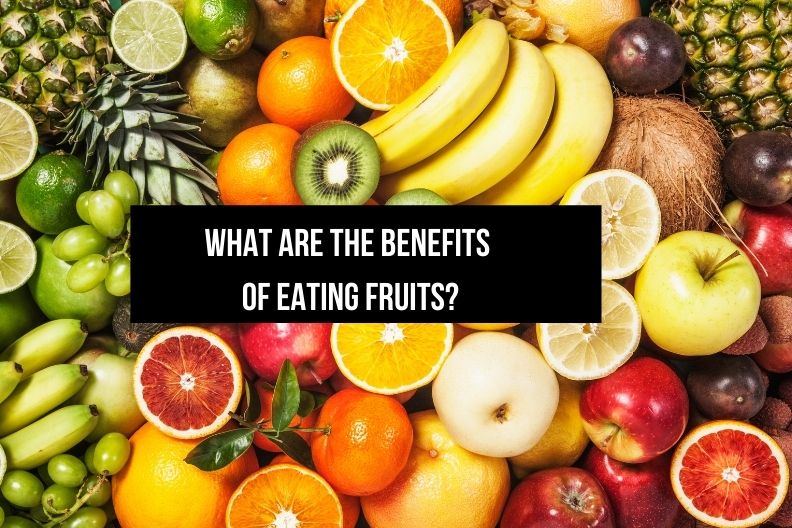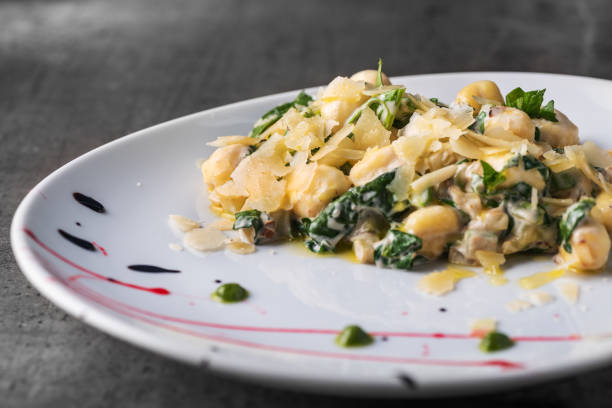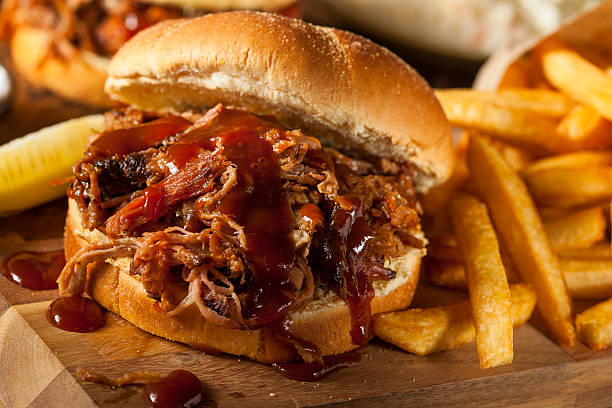What are the Benefits of Eating Fruits?
This post contains affiliate links. This means I will make a commission at no extra cost to you should you click through and make a purchase. Read the full disclosure here.
Ever wondered what are the benefits of eating fruits? If all the articles which enter the list of foods, none are more wholesome and pleasing than the fruits which nature so abundantly provides. Their delicate hues and perfect outlines appeal to our sense of beauty, while their delicious flavors gratify our appetite. Our markets are supplied with an almost unlimited variety of both native and tropical fruits, and it might be supposed that they would always appear upon the daily bill of fare, yet in the majority of homes, this is rarely the case.
Table of Contents
What is the Role of Fruits in the Human Diet?
People are inclined to consider fruit, unless the product of their own gardens, a luxury too expensive for common use. Many who use a plentiful supply, never think of placing it upon their tables, unless cooked. Ripe fruit is a most healthful article of diet when partaken of at seasonable times; but to eat it, or any other food, between meals, is a gross breach of the requirements of good digestion.
Fruits contain from seventy-five to ninety-five per cent of water, and a meager proportion of nitrogenous matter; hence their value as nutrients, except in a few instances, is rather small; but they supply a variety of agreeable acids which refresh and give tone to the system, and their abundant and proper use does much to keep the vital machinery in good working order.
Why is Fruit Juice Important?
Aside from the skin and seeds, all fruits consist essentially of two parts,—the cellulose structure containing the juice, and the juice itself. The latter is water, with a small proportion of fruit sugar (from one to twenty per cent in different varieties), and vegetable acids. These acids are either free, or combined with potash and lime in the form of acid salts. They are mallic, citric, tartaric, and pectic acids. The last-named is the jelly-producing principle.
While the juice, as we commonly find it, is readily transformable for use in the system, the cellular structure of the fruit is not so easily digested. In some fruits, as the strawberry, grape, and banana, the cell walls are so delicate as to be easily broken up; but in watermelons, apples, and oranges, the cells are coarser, and form a larger bulk of the fruit, hence are less easily digested.
As a rule, other points being equal, the fruits which yield the richest and largest quantity of juices, and also possess a cellular framework the least perceptible on mastication, are the most readily digested. A certain amount of waste matter is an advantage, to give bulk to our food; but persons with weak stomachs, who cannot eat certain kinds of fruit, are often able to digest the juice when taken alone.
What You Should Know about Unripe fruits
Unripe fruits differ from ripe fruits in that they contain, starch, which during ripening is changed into sugar, and generally some proportion of tannic acid, which gives them their astringency. The characteristic constituent of unripe fruit, however, is pectose, an element insoluble in water, but which, as maturation proceeds, is transformed into pectic and pectosic acids. These are soluble in boiling water, and upon cooling, yield gelatinous solutions. Their presence makes it possible to convert the juice of ripe fruits into jelly. Raw starch in any form is indigestible, hence unripe fruit should never be eaten uncooked. As fruit matures, the changes it undergoes are such as best fit for consumption and digestion.
There is a prevailing notion that the free use of fruits, especially in summer, excites derangement of the digestive organs. When such derangement occurs, it is far more likely to have been occasioned by the way in which the fruit was eaten than by the fruit itself. Perhaps it was taken as a surfeit dish at the end of a meal. It may have been eaten in combination with rich, oily foods, pastry, strong coffee, and other indigestible viands, which, in themselves, often excite an attack of indigestion.
Possibly it was partaken of between meals, or late at night, with ice cream and other confections, or it was swallowed without sufficient mastication. Certainly, it is not marvelous that stomach and bowel disorders do result under such circumstances. The innocent fruit, like many other good things, being found in “bad company,” is blamed accordingly. An excess of any food at meals or between meals, is likely to prove injurious, and fruits present no exception to this rule.
Fruit taken at seasonable times and in suitable quantities, alone or in combination with proper foods, gives us one of the most agreeable and healthful articles of diet. Fruit, fats, and meats do not affiliate, and they are liable to create a disturbance whenever taken together.
Partially decayed, stale, and over-ripe, as well as unripe fruit, should never be eaten. According to M. Pasteur, the French scientist, all fruits and vegetables, when undergoing even incipient decay, contain numerous germs, which, introduced into the system, are liable to produce disturbances or disease. Perfectly fresh, ripe fruit, with proper limitations as to quantity and occasion, may be taken into a normal stomach with impunity at any season.
Why You Should Wash Your Fruits Properly
It is especially important that all fruits to be eaten should not only be sound in quality, but should be made perfectly clean by washing if necessary, since fruit grown near the ground is liable to be covered with dangerous bacteria (such as cause typhoid fever or diphtheria), which exist in the soil or in the material used in fertilizing it.
Most fruits, properly used, aid digestion either directly or indirectly. The juicy ones act as dilutents, and their free use lessens the desire for alcohol and other stimulants. According to German analysts, the apple contains a larger percentage of phosphorus than any other fruit, or than any vegetable. In warm weather and in warm climates, when foods are not needed for a heat-producing purpose, the diet may well consist largely of fruits and succulent vegetables, eaten in combination with bread and grains. In case of liver and kidney affections, rheumatism, and gout, the use of fruit is considered very beneficial by many scientific authorities.
To serve its best purpose, raw fruit should be eaten without sugar or other condiments, or with the addition of as small a quantity as possible.
It is a disputed question whether fruits should begin or end the meal; but it is generally conceded by those who have given the matter attention, that fruit eaten at the beginning of a meal is itself the more readily digested, and aids in the digestion of other foods, since fruits, like soups, have the property of stimulating the flow of the digestive juices.
Something, however, must depend upon the character of the fruit; oranges, melons, and like juicy fruits, are especially useful as appetizers to begin the meal, while bananas and similar fruits agree better if taken with other food, so as to secure thorough mixture with saliva. This is true of all fruits, except such pulpy fruits as strawberries, peaches, melons, grapes, and oranges. It is often erroneously asserted that fruit as dessert is injurious to digestion.
For those people, however, who regulate their bill of fare in accordance with the principles of hygiene, a simple course of fruit is not only wholesome, but is all that is needed after a dinner; and much time, labor, and health will be saved when housekeepers are content to serve desserts which nature supplies all ready for use, instead of those harmful combinations in the preparing of which they spend hours of tiresome toil.
Types of Fruits
For convenience, fruits may be grouped together; as, pomaceous fruits, including the apple, quince, pear, etc.; the drupaceous fruits, those provided with a hard stone surrounded by a fleshy pulp, as the peach, apricot, plum, cherry, olive, and date; the orange or citron group, including the orange, lemon, lime, citron, grape fruit, shaddock, and pomegranate; the baccate or berry kind, comprising the grape, gooseberry, currant, cranberry, whortleberry, blueberry, and others; the arterio group, to which belong raspberries, strawberries, dewberries, and blackberries; the fig group; the gourd group, including—melons and cantaloupes; and foreign fruits.
It is impossible, in the brief scope of this work, to enumerate the infinite varieties of fruit; but we will briefly speak of some of the most common found in the gardens and markets of this latitude.
Apples
The origin and first home of the apple, is unknown. If tradition is to be believed, it was the inauspicious fruit to which may be traced all the miseries of mankind. In pictures of the temptation in the garden of Eden, our mother Eve is generally represented as holding an apple in her hand.
We find the apple mentioned in the mythologies of the Greeks, Druids, and Scandinavians. The Thebans offered apples instead of sheep as a sacrifice to Hercules, a custom derived from the following circumstance:
“At one time, when a sacrifice was necessary, the river Asopus had so inundated the country that it was impossible to take a sheep across it for the purpose, when some youths, recollecting that the Greek word melon signified both sheep and an apple, stuck wooden pegs into the fruit to represent legs, and brought this vegetable quadruped as a substitute for the usual offering. After this date, the apple was considered as especially devoted to Hercules.”
In ancient times, Greece produced most excellent apples. They were the favorite dessert of Phillip of Macedon and Alexander the Great, the latter causing them to be served at all meals. Doubtless they came to be used to excess; for it is recorded of the Athenian lawgiver, Solon, that he made a decree prohibiting a bridegroom from partaking of more than one at his marriage banquet, a law which was zealously kept by the Greeks, and finally adopted by the Persians. In Homer’s time the apple was regarded as one of the precious fruits. It was extensively cultivated by the Romans, who gave to new varieties the names of many eminent citizens, and after the conquest of Gaul, introduced its culture into Southwestern Europe, whence it has come to be widely diffused throughout all parts of the temperate zone.
Apples were introduced into the United States by the early settlers, and the first trees were planted on an island in Boston Harbor, which still retains the name of Apple Island. The wild crab tree is the parent of most of the cultivated varieties.
The Pear
The origin of the pear, like that of the apple, is shrouded in obscurity, though Egypt, Greece, and Palestine dispute for the honor of having given birth to the tree which bears this prince of fruits. Theophrastus, a Greek philosopher of the fourth century, speaks of the pear in terms of highest praise; and Galen, the father of medical science, mentions the pear in his writings as possessing “qualities which benefit the stomach.” The pear tree is one of the most hardy of all fruit trees, and has been known to live several hundred years.
The Quince
This fruit appears to have been a native of Crete, from whence it was introduced into ancient Greece; and was largely cultivated by both Greeks and Romans. In Persia, the fruit is edible in its raw state; but in this country it never ripens sufficiently to be palatable without being cooked. The fruit is highly fragrant and exceedingly acid, and for these reasons it is largely employed to flavor other fruits.
The Peach
This fruit, as its botanical name, prinus Persica, indicates, is a native of Persia, and was brought from that country to Greece, from whence it passed into Italy. It is frequently mentioned by ancient writers, and was regarded with much esteem by the people of Asia. The Romans, however, had the singular notion that peaches gathered in Persia contained a deadly poison, but if once transplanted to another soil, this injurious effect was lost. In composition, the peach is notable for the small quantity of saccharine matter it contains in comparison with other fruits.
The Plum
The plum is one of the earliest of known fruits. Thebes, Memphis, and Damascus were noted for the great number of their plum trees in the early centuries. Plum trees grow wild in Asia, America, and the South of Europe, and from these a large variety of domestic plum fruits have been cultivated.
Plums are more liable than most other fruits to produce disorders of digestion, and when eaten raw should be carefully selected, that they be neither unripe nor unripe. Cooking renders them less objectionable.
The Prune
The plum when dried is often called by its French cognomen, prune. The larger and sweeter varieties are generally selected for drying, and when good and properly cooked, are the most wholesome of prepared fruits.
The Apricot
This fruit seems to be intermediate between the peach and the plum, resembling the former externally, while the stone is like that of the plum. The apricot originated in Armenia, and the tree which bears the fruit was termed by the Romans “the tree of Armenia.” It was introduced into England in the time of Henry VIII. The apricot is cultivated to some extent in the United States, but it requires too much care to permit of its being largely grown, except in certain sections.
The Cherry
The common garden cherry is supposed to have been derived from the two species of wild fruit, and historians tell us that we are indebted to the agricultural experiments of Mithridates, the great king of ancient Pontus, for this much esteemed fruit. It is a native of Asia Minor, and its birthplace.
The Olive
From time immemorial the olive has been associated with history. The Scriptures make frequent reference to it, and its cultivation was considered of first importance among the Jews, who used its oil for culinary and a great variety of other purposes. Ancient mythology venerated the olive tree above all others, and invested it with many charming bits of fiction. Grecian poets sang its praises, and early Roman writers speak of it with high esteem. In appearance and size the fruit is much like the plum; when ripe, it is very dark green, almost black, and possesses a strong, and, to many people, disagreeable flavor.
The pulp abounds in a bland oil, for the production of which it is extensively cultivated in Syria, Egypt, Italy, Spain, and Southern France. The fruit itself is also pickled and preserved in various ways, but, like all other similar commodities when thus prepared, it is by no means a wholesome article of food.
The Date
The date is the fruit of the palm tree so often mentioned in the Sacred Writings, and is indigenous to Africa and portions of Asia. The fruit grows in bunches which often weigh from twenty to twenty-five pounds, and a single tree will bear from one to three thousand pounds in a season. The date is very sweet and nutritious. It forms a stable article of diet for the inhabitants of some parts of Egypt, Arabia, and Persia, and frequently forms the chief food of their horses, dogs, and camels. The Arabs reduce dried dates to a meal, and make therefrom a bread, which often constitutes their sole food on long journeys through the Great Desert.
The inhabitants of the countries where the date tree flourishes, put its various productions to innumerable uses. From its leaves they make baskets, bags, mats, combs, and brushes; from its stalks, fences for their gardens; from its fibers, thread, rope, and rigging; from its sap, a spirituous liquor; from its fruit, food for man and beast; while the body of the tree furnishes them with fuel. That which is large, smooth, and of a soft reddish yellow tinge, with a whitish membrane between the flesh and stone, is considered the best.
The Orange
According to some authors, the far-famed “golden fruit of the Hesperides,” which Hercules stole, was the orange; but it seems highly improbable that it was known to writers of antiquity. It is supposed to be indigenous to Central and Eastern Asia. Whatever its nativity, it has now spread over all the warmer regions of the earth. The orange tree is very hardy in its own habitat, and is one of the most prolific of all fruit-bearing trees, a single tree having been known to produce twenty thousand good oranges in a season. Orange trees attain great age.
There are those in Italy and Spain which are known to have flourished for six hundred years. Numerous varieties of the orange are grown, and are imported to our markets from every part of the globe. Florida oranges are among the best, and when obtained in their perfection, are the most luscious of all fruits.
The Lemon
This fruit is supposed to be a native of the North of India, although it is grown in nearly all sub-tropical climates. In general, the fruit is very acid, but in a variety known as the sweet lemon, or bergamot (said to be a hybrid of the orange and lemon), the juice is sweet. The sour lemon is highly valued for its antiscorbutic properties, and is largely employed as a flavoring ingredient in culinary preparations, and in making a popular refreshing beverage.
The Citron
The citron is a fruit very similar to the lemon, though larger in size and less succulent. It is supposed to be identical with the Hebrew tappuach, and to be the fruit which is mentioned in the English version of the Old Testament as “apple.” The citron is not suitable for eating in its raw state, though its juice is used in connection with water and sugar to form an excellent acid drink. Its rind, which is very thick, with a warty and furrowed exterior, is prepared in sugar and largely used for flavoring purposes.
The Lime
The fruit of the lime is similar to the lemon, though much smaller in size. It is a native of Eastern Asia, but has long been cultivated in the South of Europe and other sub-tropical countries. The fruit is seldom used except for making acidulous drinks, for which it is often given the preference over the lemon.
The Grape Fruit
This fruit, a variety of shaddock, belongs to the great citrus family, of which there are one hundred and sixty-nine known varieties. The shaddock proper, however, is a much larger fruit, frequently weighing from ten to fourteen pounds. Although a certain quantity of grape fruit is brought from the West Indies, our principal supply is derived from Florida. It is from two to four times the size of an ordinary orange, and grows in clusters. It is rapidly gaining in favor with fruit lovers. Its juice has a moderately acid taste and makes a pleasing beverage. The pulp, carefully separated, is also much esteemed.
The Pomegranate
This fruit has been cultivated in Asia from earliest antiquity, and is still quite generally grown in most tropical climes. In the Scriptures it is mentioned with the vine, fig, and olive, among the pleasant fruits of the promised land. It is about the size of a large peach, of a fine golden color, with a rosy tinge on one side. The rind is thick and leathery. The central portion is composed of little globules of pulp and seeds inclosed in a thin membrane, each seed being about the size of a red currant. It is sub-acid, and slightly bitter in taste. The rind is strongly astringent, and often used as a medicine.
The Grape
Undoubtedly the grape was one of the first fruits eaten by mankind, and one highly valued from antiquity down to the present time. Although this fruit is often sadly perverted in the manufacture of wine, when rightly used it is one of the most excellent of all fruits. The skins and seeds are indigestible and should be rejected, but the fresh, juicy pulp is particularly wholesome and refreshing. Several hundred varieties of the grape are cultivated. Some particularly sweet varieties are made into raisins, by exposure to the sun or to artificial heat.
Sun-dried grapes make the best raisins. The so-called English or Zante currant belongs to the grape family, and is the dried fruit of a vine which grows in the Ionian Islands and yields a very small berry. The name currant, as applied to these fruits, is a corruption of the word Corinth, where the fruit was formerly grown.
The Gooseberry
The gooseberry probably derives its name from gorse or goss, a prickly shrub that grows wild in thickets and on hillsides in Europe, Asia, and America. It was known to the ancients, and is mentioned in the writings of Theocritus and Pliny. Gooseberries were a favorite dish with some of the emperors, and were extensively cultivated in gardens during the Middle Ages. The gooseberry is a wholesome and agreeable fruit, and by cultivation may be brought to a high state of perfection in size and flavor.
The Currant
This fruit derives its name from its resemblance to the small grapes of Corinth, sometimes called Corinthus, and is indigenous to America, Asia, and Europe. The fruit is sharply acid, though very pleasant to the taste. Cultivation has produced white currants from the red, and in a distinct species of the fruit grown in Northern Europe and Russia, the currants are black or yellow.
The Whortleberry and Blueberry
These are both species of the same fruit, which grows in woods and waste places in the North of Europe and America. Of the latter species there are two varieties, the high-bush and the low-bush, which are equally palatable. The fruit is very sweet and pleasant to the taste, and is one of the most wholesome of all berries.
The Cranberry
A German writer of note insists that the original name of this fruit was cram-berry, because after dinner, when one was filled with other food, such was its pleasant and seductive flavor that he could still “cram” quite a quantity thereof, in defiance of all dietetic laws. Other writers consider the name a corruption of craneberry, so called because it is eagerly sought after by the cranes and other birds which frequent the swamps and marshes where it chiefly grows.
The fruit is extremely acid, and is highly valued for sauces and jellies. Cranberries are among the most convenient fruits for keeping. Freezing does not seem to hurt them, and they may be kept frozen all winter, or in water without freezing, in the cellar, or other cool places, for a long period.
The Strawberry
The flavor of antiquity rests upon the wild strawberry. Its fruit was peddled by itinerant dealers about the streets of ancient Grecian and Roman cities. Virgil sings of it in pastoral poems, and Ovid mentions it in words of praise. The name by which the fruit was known to the Greeks indicates its size; with the Latins its name was symbolic of its perfume.
The name strawberry probably came from the old Saxon streawberige, either from some resemblance of the stems to straw, of from the fact that the berries have the appearance when growing of being strewn upon the ground. In olden times, children strung the berries upon straws, and sold so many “straws of berries” for a penny, from which fact it is possible the name may have been derived. The strawberry is indigenous to the temperate regions of both the Eastern and Western Hemispheres, but it seems to have been matured in gardens, only within the last two centuries.
The Raspberry
This fruit grows in both a wild and a cultivated state. It derives its name from the rough rasps or spines with which the bushes are covered. Among the ancients it was called “the bramble of Mt. Ida,” because it was abundant upon that mountain. It is a hardy fruit, found in most parts of the world, and is of two special varieties, the black and the red.
The Blackberry
This fruit is a native of America and the greater part of Europe. There are one hundred and fifty-one named species, although the high-blackberry and the low-blackberry, or dewberry, are said to have furnished the best cultivated varieties.
The Mulberry
Different varieties of the mulberry tree produce white, red, and black mulberries of fine aromatic flavor, and acidulous or sweet taste. Persia is supposed to be the native home of this fruit, from whence it was carried, at an early date, to Asia Minor and to Greece. The Hebrews were evidently well acquainted with it. It was also cultivated by the farmers of Attica and Peloponnesus. The ancient mulberry was considered the wisest and most prudent of trees, because it took care not to put forth the smallest bud until the cold of winter had disappeared, not to return. Then, however, it lost no time, but budded and blossomed in a day. Several varieties are found in the United States.
The Melon
This is the generic name for all the members of the gourd tribe known as cantaloupes, muskmelons, and watermelons. The fruit varies greatly in size and color, and in the character of the rind. When fresh and perfectly ripe, melons are among the most delicious of edible fruits.
The Fig
In the most ancient histories, the fig tree is referred to as among the most desirable productions of the earth. It was the only tree in the garden of Eden of which the Sacred Writings make particular mention. Among the inhabitants of ancient Syria and Greece, it formed one of the principal articles of food. Its cultivation was, and is still, extensively carried on in nearly all Eastern countries; also in Spain, Southern France, and some portions of the United States. The fruit is pear-shaped, and consists of a pulpy mass full of little seeds. Dried and compressed figs are largely imported, and are to be found in all markets. Those brought from Smyrna are reputed to be the best.
The Banana
This is essentially a tropical fruit growing very generally in the East, the West Indies, South American countries, and some of the Southern States. The plant is an annual, sending up stems to the height of ten or fifteen feet, while drooping from the top are enormous leaves three or four feet in length, and looking, as one writer has aptly said, like “great, green quill pens.” It is planted in fields like corn, which in its young growth it much resembles. Each plant produces a single cluster of from eighty to one hundred or more bananas, often weighing in the aggregate as high as seventy pounds. The banana is exceedingly productive.
According to Humboldt, a space of 1,000 feet, which will yield only 38 pounds of wheat, or 462 pounds of potatoes, will produce 4,000 pounds of bananas, and in a much shorter period of time. It is more nutritious than the majority of fruits, and in tropical countries is highly valued as a food, affording in some localities the chief alimentary support of the people. Its great importance as a food product is shown by the fact that three or four good sized bananas are equal in nutritive value to a pound of bread. The amount of albumen contained in a pound of bananas is about the same as that found in a pound of rice, and the total nutritive value of one pound of bananas is only a trifle less than that of an equal quantity of the best beefsteak.
The unripe fruit, which contains a considerable percentage of starch, is often dried in the oven and eaten as bread, which, in this state, it considerably resembles in taste and appearance. Thus prepared, it may be kept for a long time, and is very serviceable for use on long journeys. The variety of the banana thus used is, however, a much larger kind than any of those ordinarily found in our Northern markets, and is known as the plantain. The dried plantain, powdered, furnishes a meal of fragrant odor and bland taste, not unlike common wheat flour. It is said to be easy of digestion, and two pounds of the dry meal or six pounds of the fruit is the daily allowance for a laborer in tropical America.
The Pineapple
This delicious fruit is a native of South America, where it grows wild in the forests. It is cultivated largely in tropical America, the West Indies, and some portions of Europe. The fruit grows singly from the center of a small plant having fifteen or more long, narrow, serrated, ridged, sharp-pointed leaves, seemingly growing from the root. In general appearance, it resembles the century plant, though so much smaller that twelve thousand pineapple plants may be grown on one acre. From the fibers of the leaves is made a costly and valuable fabric called pina muslin.
Nothing can surpass the rich, delicate flavor of the wild pineapple as found in its native habitat. It is in every way quite equal to the best-cultivated variety. The most excellent pineapples are imported from the West Indies, but are seldom found in perfection in out Northern markets.







